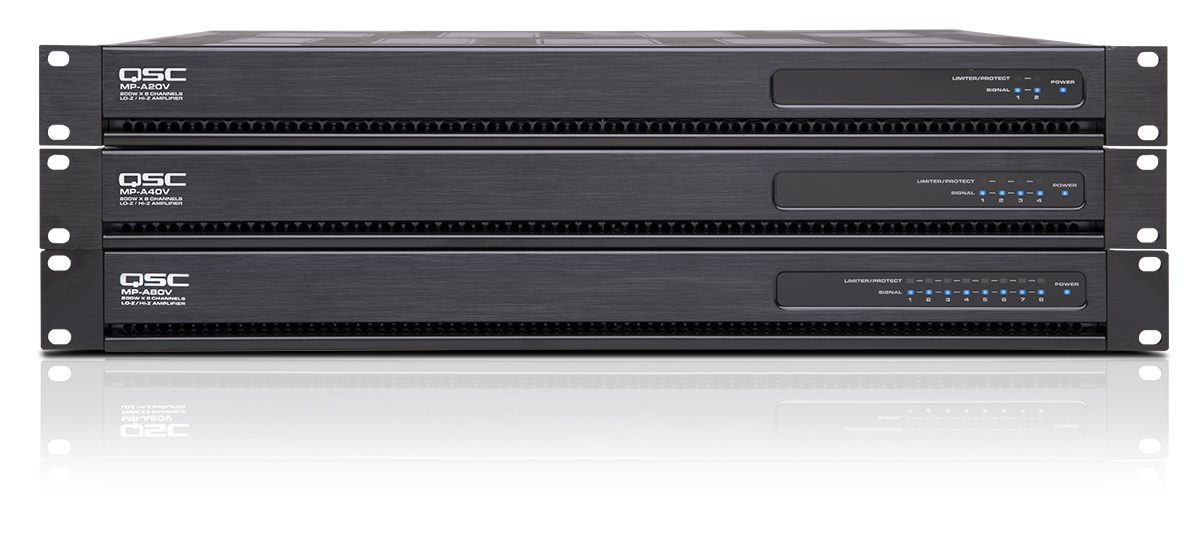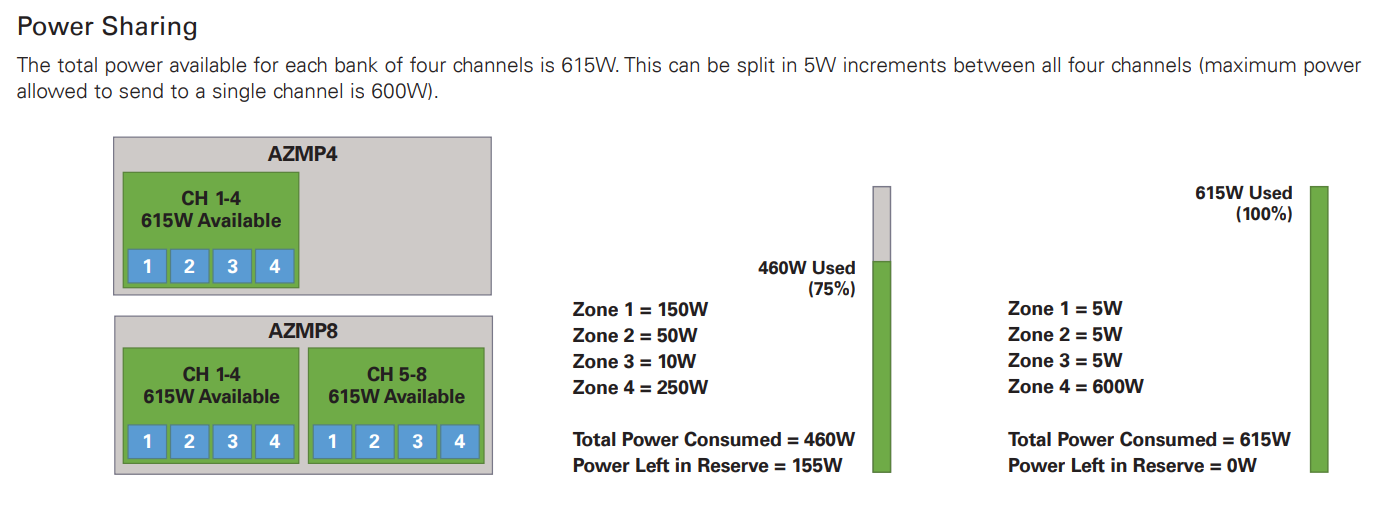What is Amplifier Power Sharing Technology?
Amplifier power sharing is a new technology where the total available amplifier power is flexibly allocated to the channel(s) that need the power most. It allows a single multi-channel amplifier to efficiently power multiple types loudspeakers simultaneously. Let’s look at this technology as used by two leading amplifier manufacturers: Atlas IED and QSC.
Atlas IED Amplifier Power Sharing
The Atlas IED AZMP4 and AZMP8 signal processors/amplifiers both utilize ground-up, internally developed amplifier power sharing technology that allows for efficient use of available power and avoiding system overdesign due to traditional amplifier power ratings.
The technology works in banks of 4 channels and has the ability to shift all available power supply power to a single channel or programmatically divide the available power supply power in any proportion to all channels. The technology does not simply rely on correct complex load calculations to divide power up but actively shapes the power to mimic the desired amplifier size per channel. Additionally, each output has the ability to independently operate in either HI-Z mode (25V, 48V, 70V, and 100V) or LOW-Z mode (4Ω or 8Ω).
This methodology allows the amplifier to match the system design rather than the system design matching a convenient amp selection.
QSC FlexAmp Technology

FlexAmp Technology simplifies system design by allowing a single high channel count amplifier to meet the needs of systems that would typically utilize multiple amplifiers of different power levels. It achieves this by allowing the installer to configure each pair of channels (e.g. ch 1-2, or 3-4, etc.) to deliver up to 400 W combined output power, in any mix. This makes for an amazing amount of flexibility, especially when paired with the output mode switch that offers settings for 4 Ω, 8 Ω, 70 V and 100 V.
For an example of versatility of the QSC MP-A Series amplifiers, imagine the MP-A40V in a typical restaurant scenario. Output A of the amplifier is set up for a 20 W 70 V load for a pair of ceiling loudspeakers in the bathrooms while output B is set up in 4 Ω mode for driving one or two Lo-Z subwoofers with up to 380 W. Output C is set up with the highpass filter engaged for driving 250 W into 70 V ceiling loudspeakers in the main dining room, while output D is driving 150 W into 8 Ω surfacemount loudspeakers on the patio.
To learn more about this technology feel free to contact us!




